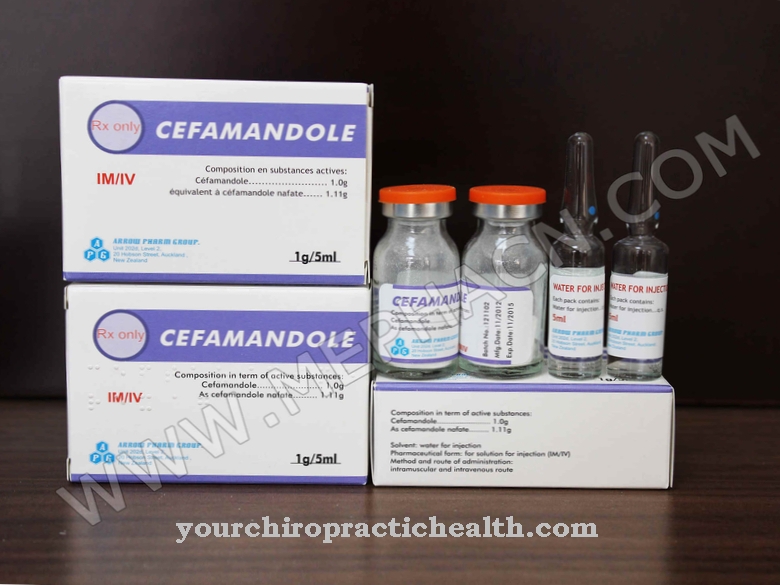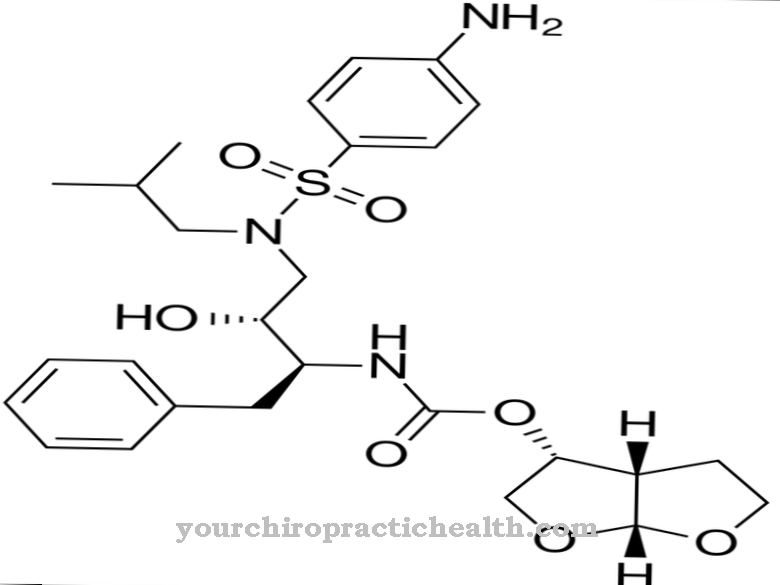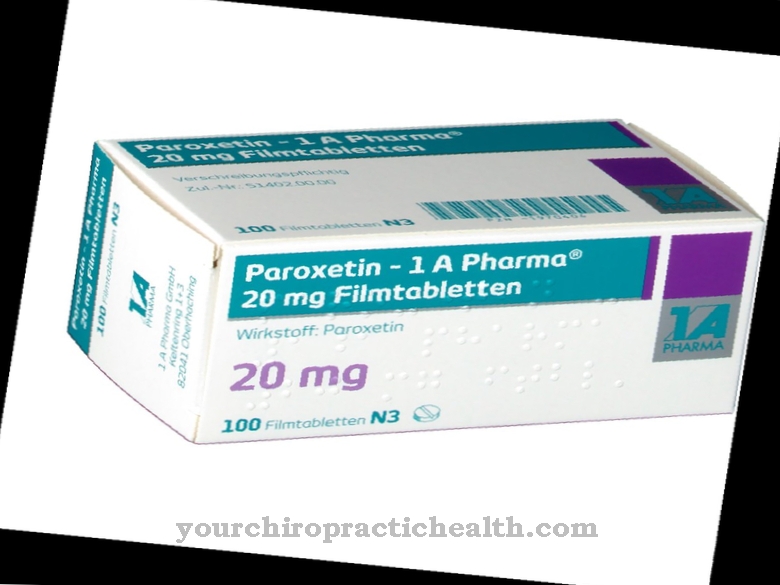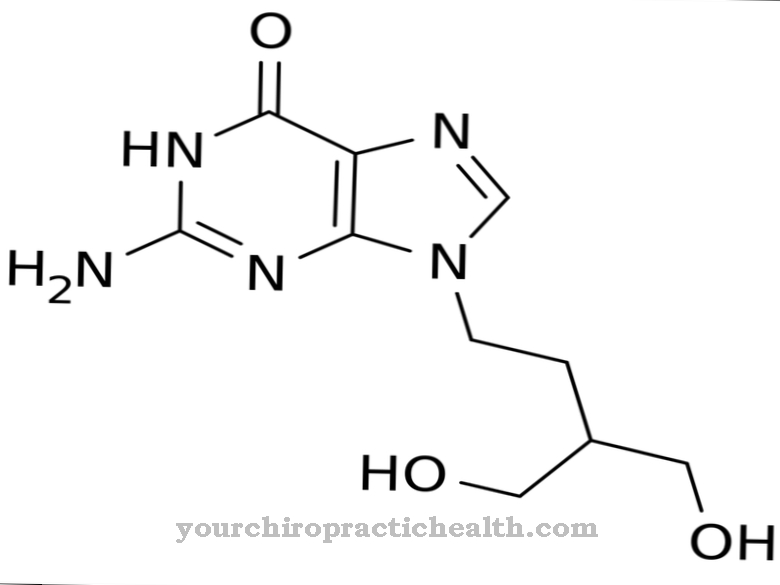At Acepromazine it is a calming and antipsychotic active ingredient. It is prescribed exclusively in veterinary medicine. Acepromazine sedates excited dogs, cats, horses and other animal species and makes them easier to steer for behavioral disorders, psychoses, severe itching and when traveling.
What is acepromazine?

The neuroleptic and sedative acepromazine is characterized by its high effectiveness. This outperforms other sedative drugs such as chlorpromazine and promazine. Acepromazine can also be used in very low doses.
In addition to immobilizing animals, it counteracts vomiting and blocks the effects of histamine to a lesser extent and of acetylcholine to a greater extent. The active ingredient acepromazine, originally a yellowish oil, is found in medicines as acepromazine maleate. Maleate is a crystalline, yellow and odorless powder with a bitter taste.
The light-sensitive drug should be stored in the dark and tightly closed. Medicines with the active ingredient acepromazine are available under the trade names Calmivet, Prequillan, Sedalin and Vetranquil. They are available as tablets, injection solutions, granules and gels for oral, subcutaneous, intramuscular and intravenous administration.
Pharmacological effect
Acepromazine has a calming and muscle relaxing effect. This effect is mainly based on a blockade of the dopamine 2 receptors (D-2 receptors). The active ingredient does not affect the remaining 5 dopamine receptors.
In addition to blocking the D-2 receptors, acepromazine inhibits the release and turnover of dopamine. The dopamine antagonism also leads to the antiemetic effect of the drug, especially in the case of vomiting that is due to opioids. A blockade of the α-1 adenoreceptors, which is also effected, dilates the blood vessels, whereupon the blood pressure and the hematocrit level fall.
Vasodilation often leads to a drop in body temperature: poikilothermia. In addition, the active ingredient reduces the tone of the smooth muscles and so relaxes them. In acute respiratory distress, acepromazine extends the breathing rate and has a calming effect.
Since acepromazine can be used in other animals in addition to dogs, cats and horses, other modes of action are discussed here. In captured wild animals, vasodilation counteracts stress-related myopathy. In pigs, it helps to suppress malignant hypothermia under stress.
Acepromazine works even in small doses. Larger doses only increase the time of effect, not the strength of the effect. If a stronger effect is desired, the combination with benzodiazepines or alternatively a combination with opioids or ketamine is recommended.
Medical application & use
In small animals such as dogs and cats, acepromazine soothes anxious, excited or aggressive animals. The drug has also proven itself when traveling or to alleviate the symptoms of motion sickness. Even psychoses and behavioral disorders can be positively influenced with acepromazine.
It also takes the stress out of horses during transport. Its long-term effectiveness is an advantage and that acepromazine does not cause ataxias.
Acepromazine is an excellent aid for medical examinations that are often difficult to carry out, such as rectal or vaginal inspections or minor interventions, even in otherwise calm animals. The sedated animals feel significantly less stress and the examination can be carried out more safely and quickly.
The agent can also be used premedically for relaxation before anesthesia and combined with strong painkillers. Domestic cats with vasospasm caused by ischemic myopathy benefit from therapy with acepromazine. It is also good for treating lower urinary tract obstructive disorders in cats. Acepromazine serves as an effective antidote for amphetamine poisoning.
Acepromazine stimulates deficient milk production in mammals, as it acts as an antagonist to the prolactin inhibitor dopamine. Acepromazine is suitable for the therapy of pets, zoo animals and animals used in agriculture.
Risks & side effects
Acepromazine is contraindicated in certain situations. It must not be administered in a state of shock because of its vasodilating effect. Because of this vasodilatory effect with an accompanying drop in blood pressure, acepromazine should, if possible, not be given to very young or old animals.
Treatment with acepromazine is also not recommended for heart problems. Increased sensitivity to the drug has been observed in greyhounds as well as breeds with short heads (brachycephalic) such as boxers and Pekingese.
Further contraindications are particularly strong excitement, major trauma, cramps, epilepsy, severe liver dysfunction and blood clotting disorders. Acepromazine must not be treated with gerbils, as these animals easily react to it with tonic-clonic convulsions.












.jpg)



.jpg)










.jpg)
